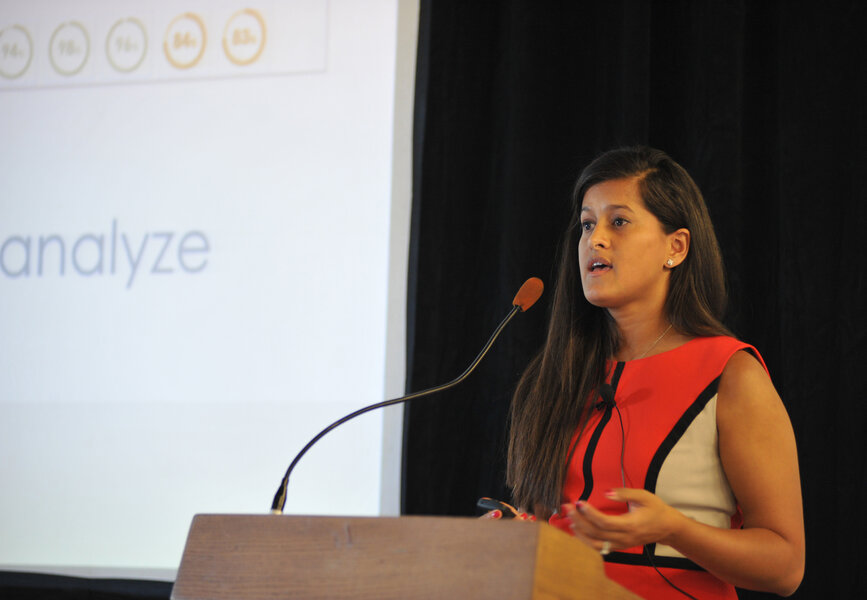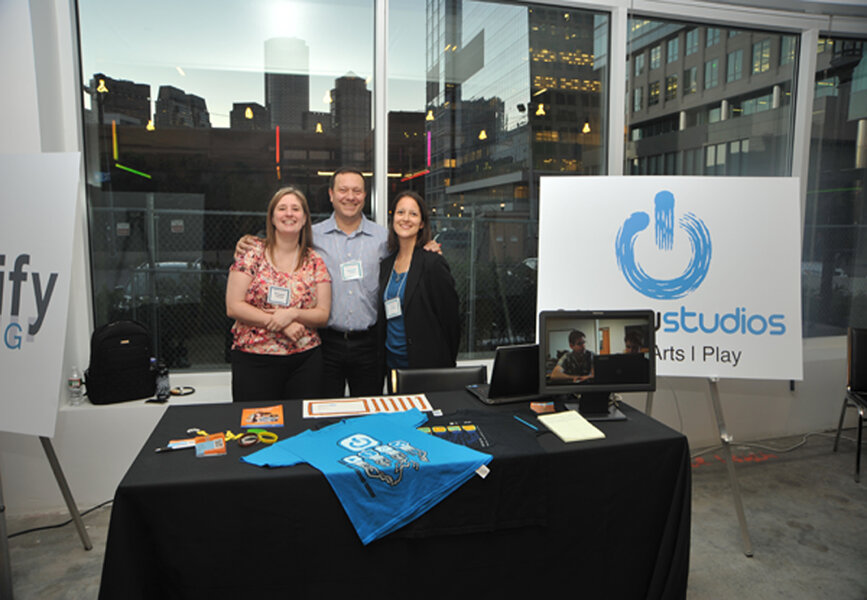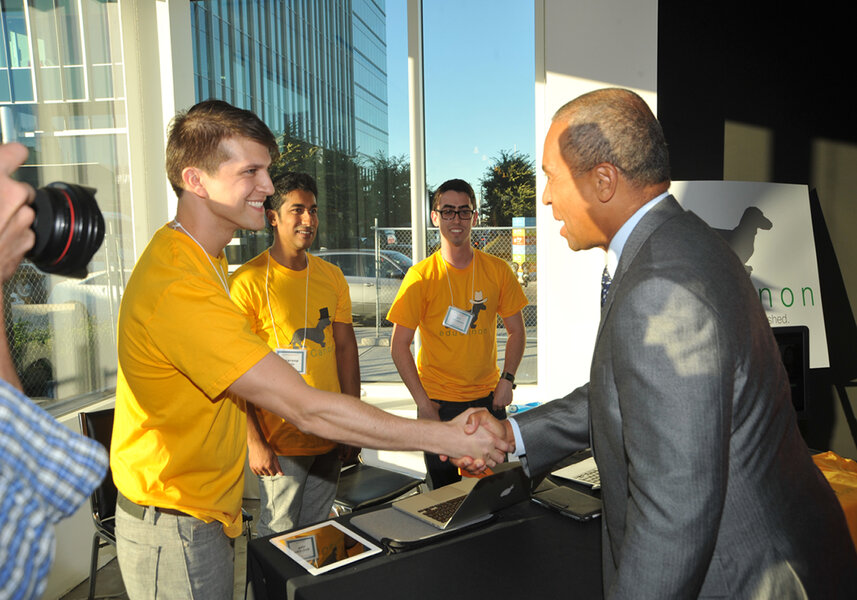Education tech start-ups: No longer the 'sleepy' crowd
A recent start-up event showcased something not everyone associates with business or technology: education.
Ben Levy, a former Teach For America teacher, showed off eduCanon, an interactive video program that aims to eliminate the classroom “zone-out effect." Monica Brady-Myerov, a former public radio reporter, introduced Listen Edition, classroom lessons that use public radio to teach the National Governors Association's Common Core standards. Dee Kanejiya, a speech recognition researcher, demonstrated Cognii, a program that uses speech recognition to guide students to answer complex questions without the help of a tutor. And they all were aiming to do something truly innovative: make education beneficial to students and profitable to investors.
Welcome to the new intersection of technology, education, and business: start-ups that focus on education technology, or ed tech. These “edupreneurs” chip away at the massive issue of education reform one byte at a time. Investments in the ed tech industry are booming, but it remains to be seen what this means for the future of education.
Most anything that combines technology and education falls under the ed tech umbrella – from iPads in K-12 classrooms to MOOCs (massive online open courses) to an app that sells textbooks.
Jean Hammond is a co-founder of the ed tech accelerator LearnLaunchX, which gives young start-ups an infusion of money, training, and networking – and hosted the recent start-up event. She attributes the current interest in ed tech to the digital shift, the United States' lagging education performance, and a focus on accountability, especially with 45 states adopting the new Common Core standards this year.
Ms. Hammond recalls a recent ed tech start-up competition at Harvard. “It was no longer like the sleepy crowd was over in education,” she says. “There was tons of energy. It’s just an [industry] who’s time has come.”
The number of ed tech-specific accelerators has recently spiked. In 2011, there was only one accelerator specifically devoted to education, Imagine K12. Today, there are more than 15.
One of these is Hammond’s company, LearnLaunchX. Accelerators help build the groundwork for start-ups in exchange for equity in the companies. LearnLaunchX kicked off in September 2012 and in January picked its first round of “cohorts” (start-ups) who were offered three months of intensive training in Boston, $18,000 in funds, six months’ of office space, and access to LearnLaunchX’s network of more than 50 industry experts.
And it all came down to Demo Day, an event where the start-ups showcased the fruits of their labor in hopes that investors would take a bite. The event, held at a new center designed for Boston’s innovation community by the Mayor's office, was bustling with investors and start-up fans praising the use of technology to innovate for good. Massachusetts Gov. Deval Patrick even stopped by to take a peek.
However, education is a notoriously underfunded industry, and ed tech isn’t known to generate massive returns. Hammond admits ed tech companies likely won’t see a huge payout on the scale of a Pinterest or Facebook, but can attract a number of moderate returns since there are so many niches. More so, she says “there is a lot of interest in this generation about meaningful work.”
“No one gets into ed tech for the money,” says Mr. Levy of eduCanon.
But people are willing to invest money in ed tech. Ed tech funding boomed in 2012, topping $1.1 billion in investments, according to CB Insights, a venture capital database. In the first half of 2013, more than $481 million has been invested, and the number of investment deals are up by 10 percent over the first half of 2012.
This investment interest has caught the eye of big-idea entrepreneurs looking for financial support, which some worry dilutes the do-good mentality that seems to set ed tech apart.
Reynol Junco, a fellow at the Harvard Berkman Center for Internet and Society and associate professor of library science at Purdue University, has been vocal about his skepticism of ed tech start-ups. The problem is cultural, he says, pointing out many ed tech start-ups believe their role as innovators is to swoop in and solve the problem, rather than collaborate with educators. In addition, he says they don’t provide evaluations that measure classroom effectiveness, which misses half the equation.
“It’s not about the tool, it’s about how the tool is used,” he says.
And it remains to be seen whether an increase of technology in education actually makes a difference. A 2013 study of technology in schools by the liberal-leaning Center for American Progress found that no states had performed a return-on-investment study, and that most students were using their computing technology for basic needs, such as math problems, rather than sophisticated learning, like experiments and analysis.
But for now, it is full steam ahead in the ed tech world. Back at LearnLaunchX’s Demo Day, T-shirt-clad entrepreneurs chatted with well-heeled business people. Each start-up talked with a steady stream of curious event attendees. The mood seemed cautiously optimistic, intrigued by what these innovations could mean for the future of education and technology. Dean Millot, the K-12 partner at education consulting company Good Harbor Partners, says he doesn’t see why Boston shouldn’t be the “Silicon Valley of education.”
Tarlin Ray is managing director of late-stage start-up advising company Triple Threat Advisors, once worked at Kaplan Test Prep, serves on a charter school board, and is the son of a teacher. Having seen education from all sides, he says the technology was impressive but the real test will be selling to often-fragmented districts. The key to success? Access the teachers looking for solutions, and let them convince the rest.
“There are 3.6 million teachers and how do you attract them?” he asks. “[Start-ups] are servicing one unique niche. If they can get [a] share, I think they have a shot.”









